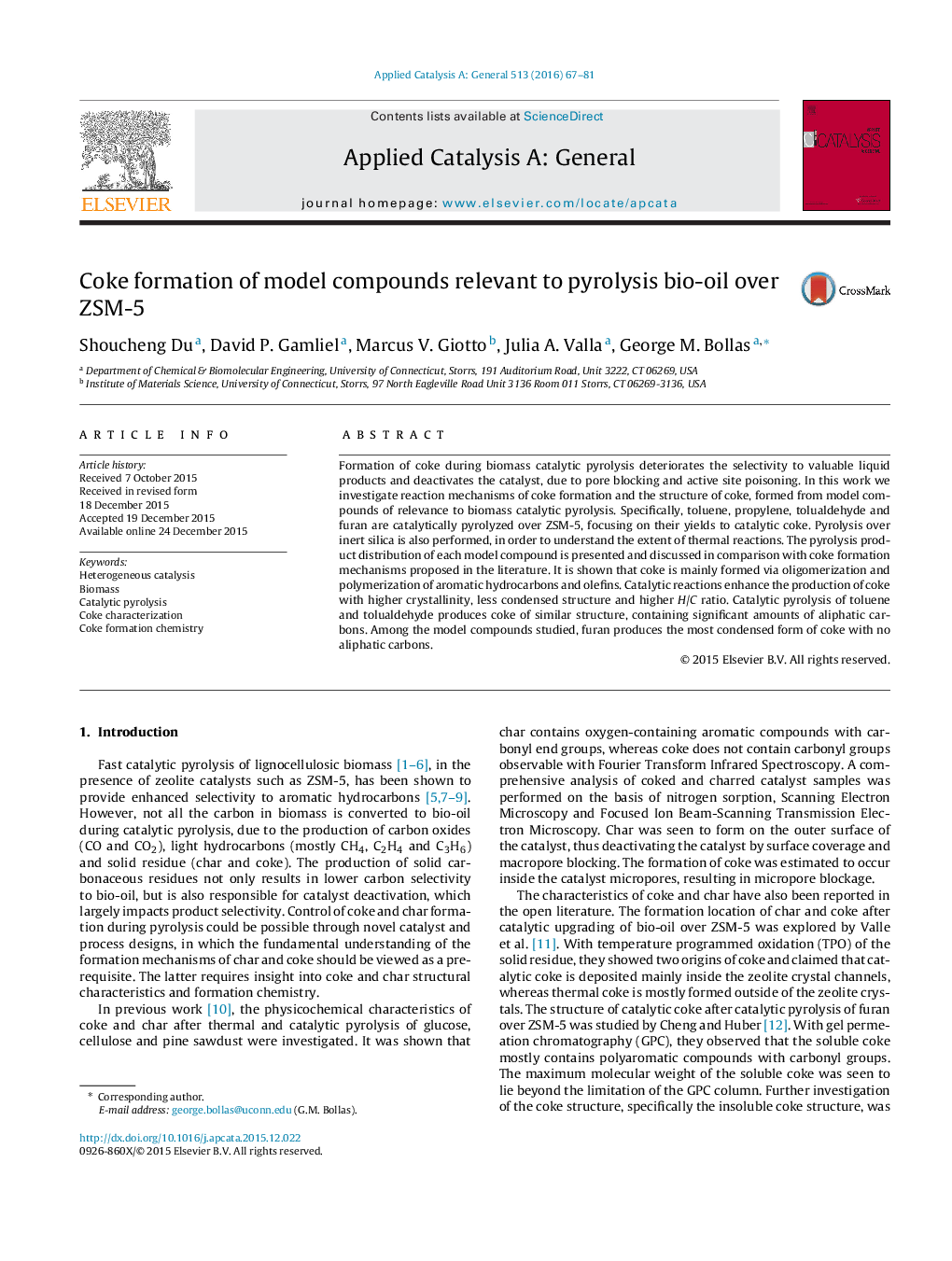| Article ID | Journal | Published Year | Pages | File Type |
|---|---|---|---|---|
| 38846 | Applied Catalysis A: General | 2016 | 15 Pages |
•Toluene, propylene, tolualdehyde and furan were catalytically pyrolyzed over ZSM-5.•Coke forms via oligomerization and polymerization of aromatics and olefins.•Catalytic reactions produce coke with higher crystallinity and higher H/C ratio.•Chemical structures for coke are proposed, satisfying 13C NMR and elemental analysis.
Formation of coke during biomass catalytic pyrolysis deteriorates the selectivity to valuable liquid products and deactivates the catalyst, due to pore blocking and active site poisoning. In this work we investigate reaction mechanisms of coke formation and the structure of coke, formed from model compounds of relevance to biomass catalytic pyrolysis. Specifically, toluene, propylene, tolualdehyde and furan are catalytically pyrolyzed over ZSM-5, focusing on their yields to catalytic coke. Pyrolysis over inert silica is also performed, in order to understand the extent of thermal reactions. The pyrolysis product distribution of each model compound is presented and discussed in comparison with coke formation mechanisms proposed in the literature. It is shown that coke is mainly formed via oligomerization and polymerization of aromatic hydrocarbons and olefins. Catalytic reactions enhance the production of coke with higher crystallinity, less condensed structure and higher H/C ratio. Catalytic pyrolysis of toluene and tolualdehyde produces coke of similar structure, containing significant amounts of aliphatic carbons. Among the model compounds studied, furan produces the most condensed form of coke with no aliphatic carbons.
Graphical abstractFigure optionsDownload full-size imageDownload high-quality image (173 K)Download as PowerPoint slide
